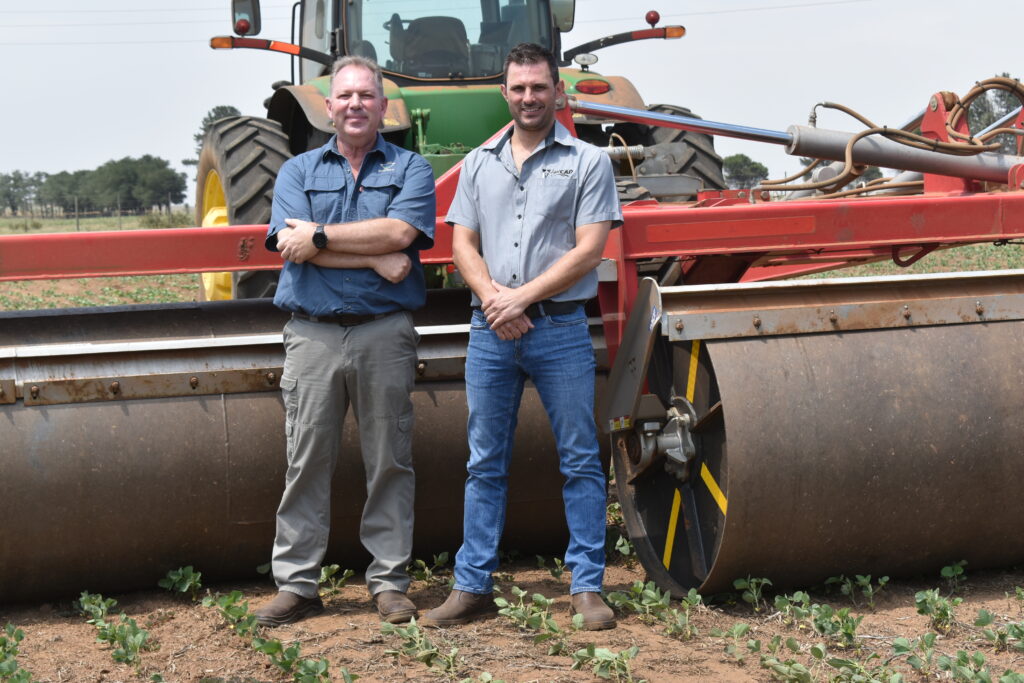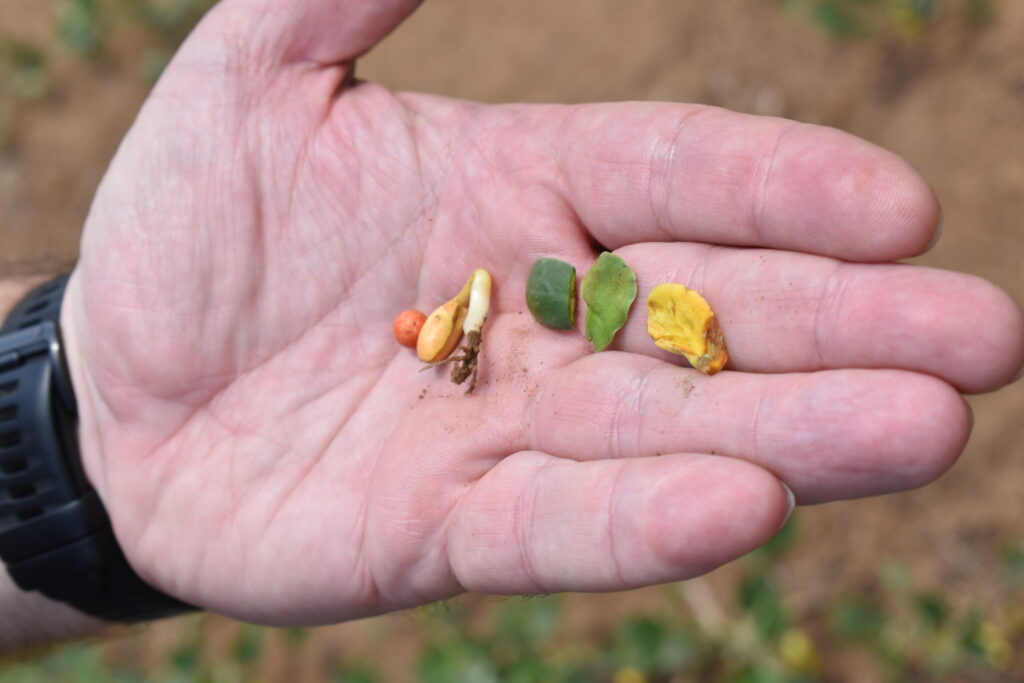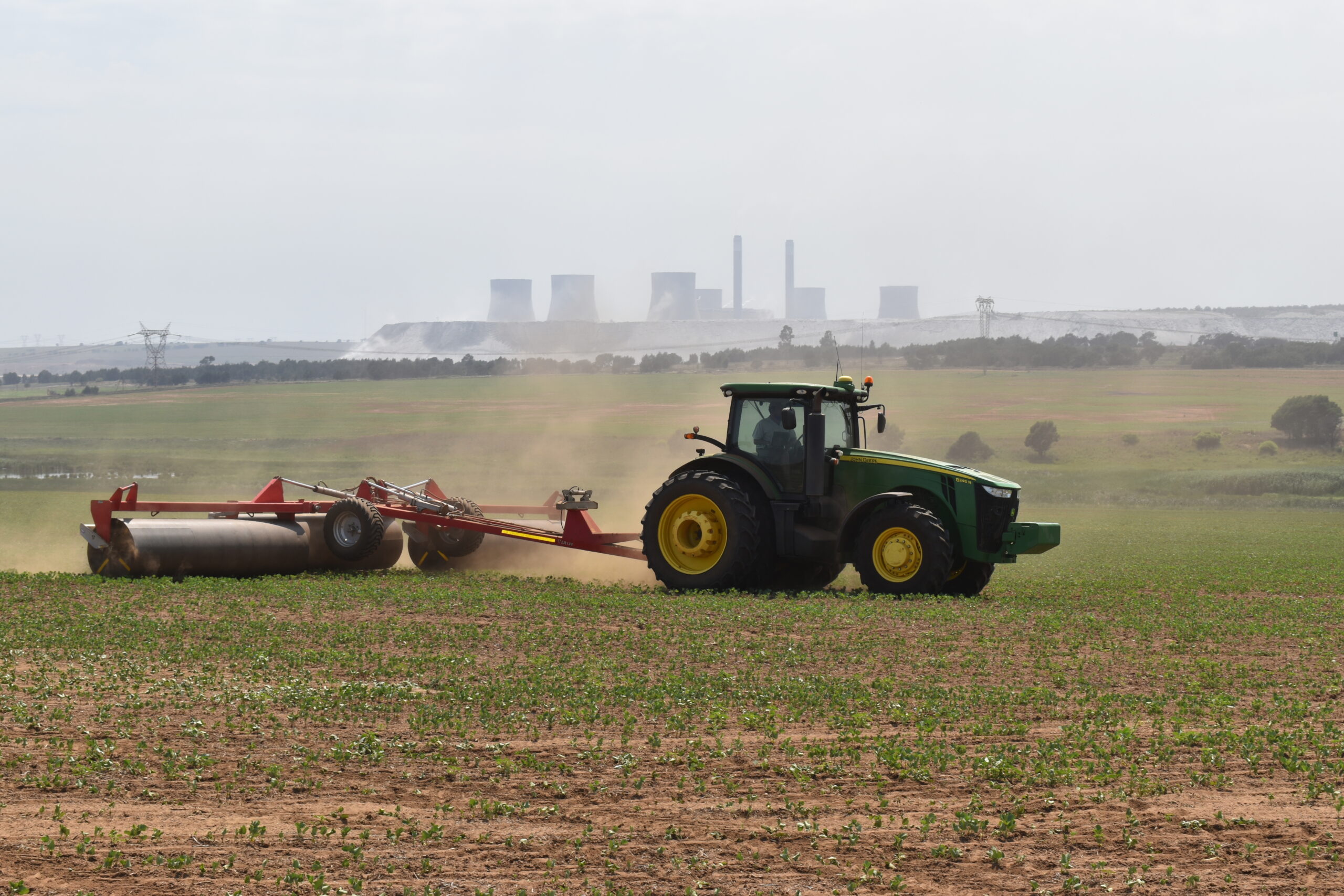A larger harvest and more profits in the bag. That is what the AgriCAD land roller means for the soya bean production of Hardu Prinsloo, owner of JGP Boerdery in the Delmas district.
Hardu acquired the AgriCAD LR122-landroller to give his soya bean production a boost and decrease the wear and tear of his other implements.
Ruan Jonas, AgriCAD Marketing and International Sales Agent, is the man who sold this land roller to Hardu. He explains how their range of land rollers are designed with South African farmers in mind.
This land roller range has four models: the 7,6 m, 9,4 m, 11,3 m and 12,2 m. The latter is used in Hardus’ fields.
Advantages of this land roller:
Ruan talks about the advantages this range holds for farmers.
The land roller levels seedbeds to ensure that the seeds are planted evenly. This gives every seed an equal chance for germination and growth. The roller also breaks down large clots and pushes rocks into the soil, which means that the farmer can harvest closer to the ground and reduce the risk of waste, damage or too much wear and tear on his combine harvester. It can lead to yield improvement of 15%.
“The land roller also flattens maize stubble for quicker incorporation into the soil, which increases the soil life and texture. This in turn helps to reduce wear and tear on other implements. It ensures better contact between seeds and soil for better germination, and increases the water retention of the soil,” explains Ruan.

Hardu Prinsloo from JGP Boerdery and Ruan Jonas from AgriCAD with the land roller that helps to improve the farm’s soya bean yields.
The AgriCAD land rollers’ purpose on Hardu’s farm:
Hardu rolls his soya beans when the plants are about ankle high. This land roller guarantees that the soya beans produce more pods and seeds rather than only growing into large plants.
Hardu explains how important it is to roll the plants at precisely the right time. If they have not grown high enough, you can push them too deep into the soil and they may not sprout, however if they have grown too high you can bend and break the plants.
The AgriCAD land roller is comprised of three separate rollers that can be interlocked to form a solid unit, but Hardu’s field have contours, so they prefer to use the floating system. This prevents the roller from forming a soil wall while rolling.

The soya bean growth stages.
What do you need for this land roller?
Ruan suggests a tractor of 100 kW or more is used, but because Hardu has more sandy fields where smaller tractors are not as effective, they use a larger tractor.
Hardu says the roller needs to be drawn at a high speed to finish the job efficiently and quickly. When used at a slower pace, there is a tendency to push the soil instead of rolling over it.
Hardu says: “This land roller is an excellent product. My neighbours have also bought rollers on my recommendation, and they have achieved similar favourable results. They are also very satisfied. The service we receive from AgriCAD is phenomenal. We have used many of their products and they are always willing to help us. With any product there are some growing pains, and they are always willing to support you all the way.”
Ruan says; “We have had great success with our land roller range which is designed and manufactured specifically for the needs of South African farmers.”
The land roller is also designed to be easily moved from one field or farm to another. The rear roller lifts up while the side rollers fold in to make the implement narrow enough to pass through gates.
To find out more about the land roller and other AgriCAD products, you may visit their website at www.agricad.co.za










Thanks for finally talkiing about AgriCAD land rollers